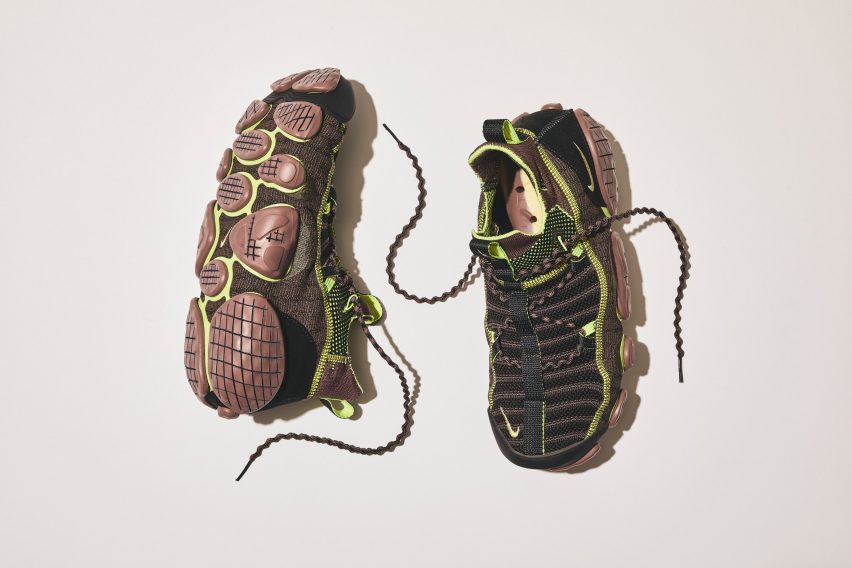Sportswear brand Nike has unveiled ISPA Link, a collection of modular trainers that can be easily disassembled, as part of the brand’s move towards a circular design economy.
The line comes from Nike’s ISPA (Improvise Scavenge Protect Adapt) design division, which works to create sustainable solutions to design problems.
It comprises two trainers, the ISPA Link and ISPA Link Axis, which are modular designs produced without glue. Glue is normally used during the cementation process to attach the shoes’ parts together.
Instead, the ISPA Link trainers consist of three interlocking parts that are held – or linked – together by tension. Each shoe has a sole made up of pegs that slot into openings in the upper – the part that covers the foot.
“The idea was to completely eradicate the cementation process,” said Darren Matthews, a vice president of shoe design at Nike and lead at ISPA.
ISPA Link, which will be available for consumers in June 2022, represents ISPA and Nike’s “first steps to understanding how we can get to a circular process,” Matthews added.
“You have to completely understand the processes it takes to create a product to undo it again,” said Matthews.
Matthews also noted that making shoes in this way will reduce emissions by eliminating energy-intensive processes such as heating and cooling tunnels, as well as glue lines.
According to Matthews, each pair of ISPA Link shoes takes only eight minutes to produce, which can also help lower emissions from labour.
Nike referenced early 2000s designs, such as its computer-modelled Zvezdochka trainer and Presto Clip running shoe, for the ISPA Link trainers.
The ISPA Link Axis has the same general design principles as the ISPA Link, but differs from its predecessor in its materials. It will be made completely from recycled and recyclable materials.
Noah Murphy-Reinhertz, sustainable design lead at Nike, noted that the goal for these products was to go from “spark to scale.”
“We’re not innovating for one small example,” said Murphy-Reinhertz.

